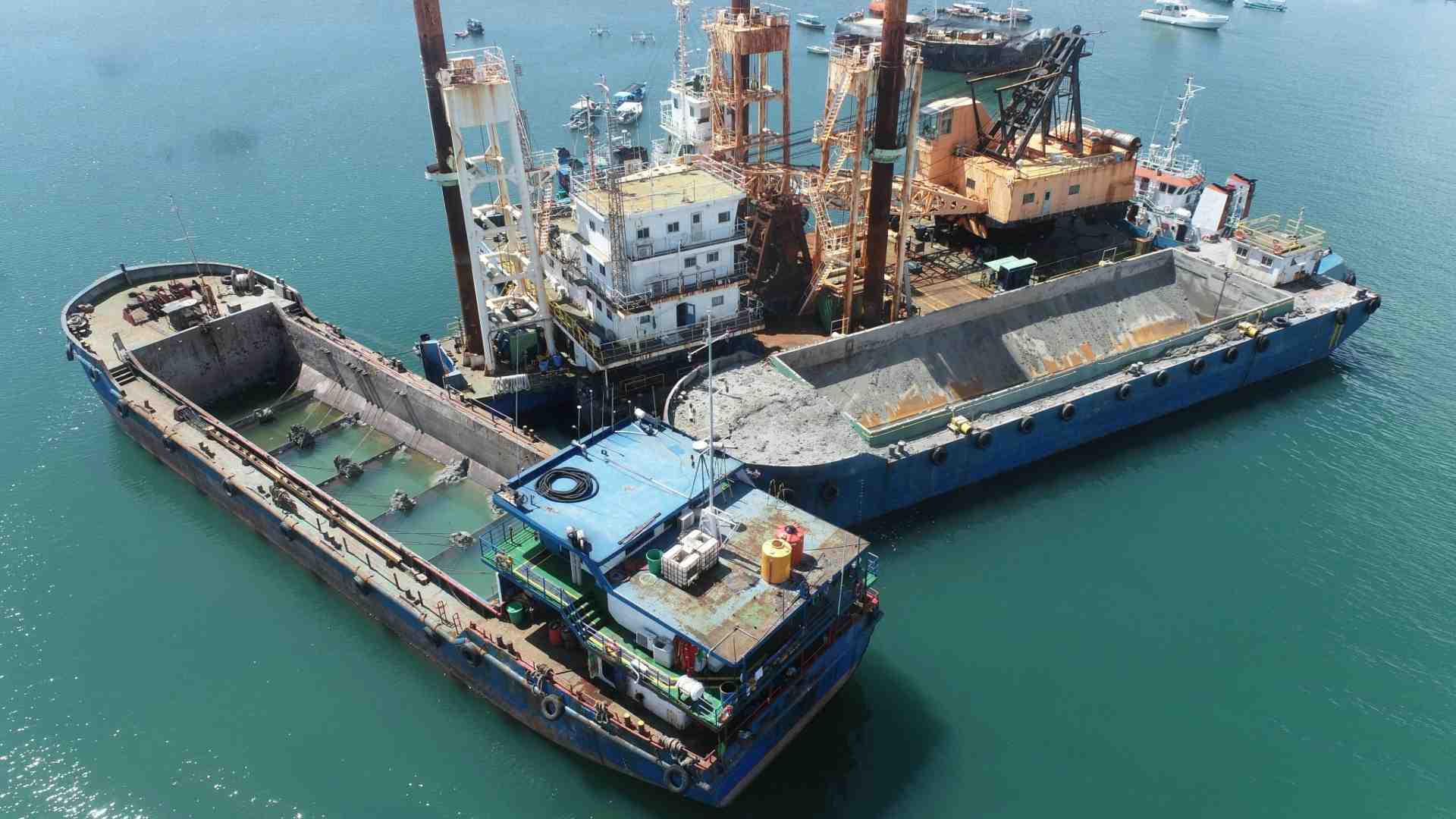Introduction
After more than two decades of planning, one of Mexico’s most ambitious maritime infrastructure projects has finally moved forward. The long-awaited expansion of the Deep Sea Port of Progreso in Yucatán officially began with the arrival of the Fernando de Magallanes, one of the most advanced dredging vessels in the world. This milestone signals the start of large-scale port dredging operations designed to transform Progreso into a strategic logistics hub for Mexico and international trade.
A State-of-the-Art Dredging Vessel
The Fernando de Magallanes is no ordinary ship. At 138.5 meters long and powered by 30,000 horsepower, it ranks among fewer than 20 dredgers of its class worldwide. After crossing the Atlantic from Europe, it docked at Progreso to begin seabed excavation. Its mission: to remove millions of cubic meters of sediment, deepening and widening the port’s navigation channel to handle larger vessels.
Currently, Progreso’s channel measures 150 meters wide, 8 kilometers long, and 12 meters deep. The dredging project will expand those dimensions to 180 meters wide, 10 kilometers long, and 14 meters deep. This improvement will enable the port to receive ships carrying up to 100,000 tons—nearly triple the current load limits of 36,000 to 40,000 tons.
Governor Joaquín Díaz Mena, who toured the vessel, highlighted the ship’s powerful rock cutters, pumping systems, and command center. He emphasized that this modernization represents a “turning point” for Yucatán’s economic and commercial future.
Massive Investment for Port Modernization
The expansion of Progreso involves a historic investment of 7.9 billion pesos (approximately $400 million USD). This funding combines federal, state, and private resources to ensure the success of the project. In addition to dredging, the port will grow from 36 hectares to 116 hectares of operational space, creating room for logistics centers, new companies, and expanded maritime services.
According to officials, this phase of port dredging alone will increase the available operational area by over 200 percent. The modernization is expected to attract multinational corporations, strengthen supply chains, and position Progreso as one of Mexico’s most competitive deep-water ports.
A Key Pillar of the Plan Renacimiento Maya
The dredging project forms part of the broader Plan Renacimiento Maya (Maya Renaissance Plan), Governor Díaz Mena’s long-term development vision for Yucatán. The plan integrates economic modernization with education, employment, wellness initiatives, and environmental sustainability.
One of its most strategic goals is to connect the Maya Train with Puerto Progreso, creating a cargo rail corridor estimated at 35 billion pesos. Managed by Mexico’s Defense Ministry, this corridor will link maritime trade directly with inland logistics networks, further amplifying the impact of the port expansion.
Strategic Economic Benefits of Dredging
For decades, limited depth and channel width restricted Progreso’s capacity to compete with larger ports in Mexico and the Gulf of Mexico. With the dredging project underway, the port is poised to handle significantly higher container volumes and larger commercial ships.
At present, Progreso processes approximately 54,000 TEUs (twenty-foot equivalent units) annually, with 22 vessels arriving per month. Once dredging is complete, shipping companies will be able to send larger container ships and bulk carriers directly to Yucatán, reducing reliance on transshipment points and cutting transport costs.
This enhanced capacity will not only boost exports of Yucatecan goods—such as textiles, electronics, seafood, agricultural products, and honey—but also attract imports that support local industries and consumers.
Admiral Raymundo Morales Ángeles of the Mexican Navy emphasized that the modernization will generate economic opportunities for coastal communities, particularly for young people seeking stable employment in shipping, logistics, and port services.
Advanced Dredging for Sustainable Growth
While large-scale port dredging projects often raise environmental concerns, the Progreso expansion is being closely monitored to balance economic growth with ecological protection. The Fernando de Magallanes is equipped with advanced dredging systems that minimize disruption to marine habitats while efficiently removing sediment.
Authorities have also announced that in addition to Progreso, the vessel will perform dredging operations in other Yucatán ports such as Sisal, El Cuyo, and Celestún. This broader effort aims to strengthen coastal infrastructure across the region, ensuring that smaller fishing and tourism communities also benefit from improved port facilities.
Positioning Yucatán in Global Trade
With its strategic location on the Gulf of Mexico, Progreso is a natural gateway between North America, Central America, and Europe. By modernizing its port infrastructure through dredging, Yucatán is positioning itself as a vital player in global supply chains.
The improved port will serve as a key link between Mexican exporters and major markets in the United States, while also opening opportunities for new international trade routes. Companies seeking to establish logistics bases in the region will benefit from shorter transit times, competitive shipping costs, and a modernized infrastructure capable of supporting heavy cargo traffic.
Looking Ahead
The dredging of Progreso is more than an infrastructure project; it is a symbol of Yucatán’s economic renaissance. After 25 years of anticipation, the state is taking a bold step toward transforming its maritime and trade landscape.
When completed, the expanded port will not only handle larger vessels but also create a ripple effect across the Yucatán economy, generating jobs, attracting investment, and strengthening Mexico’s role in international commerce.
For the people of Yucatán, this port dredging effort represents a gateway to new opportunities and prosperity, ensuring that Progreso lives up to its name as a port of progress.
